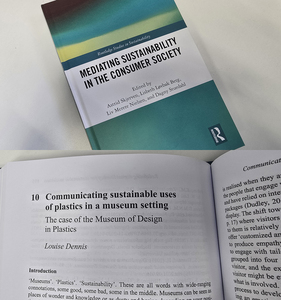In order to understand the relationships individuals have with plastics today, it is useful to understand how people related to those materials in the past. After the restrictions of the Second World War with rationing touching many aspects of consumption, society of the 1950s was encouraged to consume products to aid economic growth, to maintain jobs, and improve lifestyles (Hine, 2010). Disposability and the notion of using something once and then throwing it away grew to become a sign of wealth and cleanliness, consumers were encouraged to use disposable products for their efficiency and to avoid contamination. The ideas of purification and convenience encouraged the development of ethical justifications for the use of disposable items (Hawkins, 2006). The link between cleanliness and single-use packaging is strengthened by the act of throwing away the wrapper (Lucas, 2002); the ecological consequences were not, at that time, contemplated (Fiell and Fiell, 2009). The popular understanding that plastics are low value and therefore disposable has been built up over a history of misuse of long-lived materials for short-lived products. This paper will explore the value placed on plastics through and exploration of their uses and misuses, their consumption and significantly their conspicuous non-consumption, and how we deal with them at the end of their useful life.
 |



 Lists
Lists Lists
Lists![Cover image of Plastics, Environment, Culture, and the Politics of Waste, edited by Tatiana Konrad [thumbnail of Cover image of Plastics, Environment, Culture, and the Politics of Waste, edited by Tatiana Konrad]](https://research.aub.ac.uk/372/1.haslightboxThumbnailVersion/book%20cover%20image.jpg)









